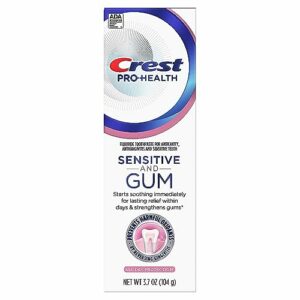In our step-by-step guide on how to prevent dental fluorosis from drinking fluoridated water, we aim to help those who are concerned about the potential risks of fluoride and its effects on dental health. We understand that dental fluorosis can be a worry, and we want to provide empathetic guidance on how to minimize the risk and maintain a healthy smile.
Ensuring Dental Health with Fluoride
Understanding dental fluorosis
Dental fluorosis is a condition that affects the appearance of teeth, resulting from the consumption of water with high levels of fluoride during tooth development. When children ingest excessive amounts of fluoride, it interferes with the formation of tooth enamel, leading to dental fluorosis. To understand if your water has high fluoride levels, it is important to have it tested by a professional. If high levels are found, consider using alternative sources of water or a water filtration system to reduce fluoride intake.
Assessing fluoride levels in your water
To test the fluoride levels in your tap water using a fluoride testing kit, follow these simple steps:
- Gather your materials: Start by assembling everything you need. This includes a fluoride testing kit, a clean glass, and a sample of your tap water.
- Prepare the sample: Fill the clean glass with your tap water. Make sure to fill it to the specified level indicated in the instructions of your fluoride testing kit.
- Add the reagent: Open the reagent bottle provided in your kit and carefully add the required number of drops to the water in the glass. The number of drops may vary depending on the brand of the testing kit, so be sure to follow the instructions provided.
- Mix and wait: Gently swirl the glass to ensure the reagent mixes thoroughly with the water. Then, set the glass aside and wait for the recommended amount of time specified in the instructions. This will allow the reagent to react with the fluoride in the water.
- Check the color: After the specified waiting time, compare the color of the water in the glass to the color chart provided in your testing kit. The color change will indicate the fluoride level in your tap water.
Remember, testing the fluoride levels in your tap water helps ensure the safety of you and your family.
Filtering fluoridated water
To filter fluoridated water, you can use activated carbon filters or reverse osmosis systems. Activated carbon filters are effective in removing fluoride by adsorption. Simply attach the filter to your water source and follow the manufacturer’s instructions for replacement or maintenance. Reverse osmosis systems are another option for filtering fluoridated water. Install the system under your sink or use a whole-house system, if desired, and follow the manufacturer’s instructions for maintenance and filter replacement.
Choosing alternative sources of water
Consider exploring alternative sources of drinking water with lower fluoride levels. One suggestion is to opt for bottled water, which often has lower fluoride content compared to tap water. Another option is to choose distilled water, as the distillation process helps in removing impurities, including fluoride. Research and select the alternative source that best suits your needs and preferences.
Using fluoride-free toothpaste
To minimize fluoride exposure during brushing, we recommend using fluoride-free toothpaste. Here are some steps to follow:
- Choose a fluoride-free toothpaste: Look for toothpaste labels that specifically state “fluoride-free” or “fluoride-free formula.”
- Apply the toothpaste: Squeeze a pea-sized amount of fluoride-free toothpaste onto your toothbrush.
- Brush your teeth: Gently brush your teeth using a circular motion for at least two minutes, making sure to reach all areas of your mouth.
- Spit and rinse: Spit out the toothpaste after brushing, but avoid rinsing your mouth immediately. This allows the fluoride-free toothpaste to continue its beneficial effects on your teeth.
- Rinse after a few minutes: After a few minutes, rinse your mouth thoroughly with water to remove any remaining toothpaste residue.
- Repeat twice a day: Brush your teeth with fluoride-free toothpaste at least twice a day, preferably after meals.
Remember, while using fluoride-free toothpaste is a personal choice, it is essential to maintain good oral hygiene practices such as regular brushing and flossing.
Practicing good oral hygiene
To maintain good oral health, it is crucial to prioritize proper dental care. Start by brushing your teeth at least twice a day using a fluoride toothpaste, making sure to reach all surfaces of your teeth and gums. Don’t forget to floss daily to remove plaque and food particles from between your teeth. Lastly, schedule regular dental check-ups with your dentist to detect any potential issues early on and receive professional cleaning. By following these simple steps, you can ensure a healthy and happy smile.
Balancing fluoride intake
To maintain a balanced fluoride intake and avoid excessive levels, it is important to be mindful of other sources of high fluoride. Avoid consuming certain foods and beverages that may contribute to an excessive intake of fluoride. Limit consumption of fluoridated water, tea, canned fish, and processed foods, as these can be significant sources of fluoride. Opt for fresh and unprocessed foods, and consider using non-fluoridated toothpaste to reduce overall fluoride exposure.
Consulting with a dental professional
When it comes to dental health, seeking advice from a dental professional is crucial for personalized recommendations and guidance. Here are a few ways you can encourage readers to take this important step:
- Schedule regular dental check-ups: Regular visits to the dentist can help identify any potential issues early on and allow for timely interventions.
- Discuss concerns and symptoms: If readers experience any dental concerns or symptoms, encourage them to speak openly with their dentist. This will help the dentist understand the situation better and provide appropriate recommendations.
- Follow professional recommendations: Dental professionals are experts in their field and can offer individualized advice based on each person’s unique needs. Encourage readers to follow their recommendations for optimal oral health.
- Seek professional guidance for treatment options: If readers require dental treatments or procedures, they should consult with a dental professional who can explain the available options and help them make informed decisions.
Remember, seeking advice from a dental professional is essential for maintaining good oral health.
Understanding the potential risks
In conclusion, we have discussed the importance of preventing dental fluorosis caused by drinking fluoridated water. We have provided a comprehensive guide with practical tips on how to minimize the risk of this condition. Remember, dental fluorosis can have a lasting impact on oral health and appearance, so it is crucial to take preventative measures. By following the suggestions outlined in this post, you can significantly reduce the chances of developing dental fluorosis. We urge you to take action and protect yourself and your loved ones from this condition. Remember, a healthy smile is a beautiful smile!
Essential Supplies
Safeguarding Your Smile
Step-by-Step Guide to Safely Benefit from Drinking Fluoridated Water
- Start by ensuring that your tap water is fluoridated. Check with your local water provider to confirm if fluoride is added to the water supply in your area
- If your tap water is not fluoridated, consider using a water filter that specifically includes fluoride. This will help ensure that you and your family are still receiving the benefits of fluoride in your drinking water
- Encourage everyone in your household to drink fluoridated water regularly. This is especially important for children, as fluoride helps strengthen their teeth and prevent tooth decay
- Make it a habit to drink water throughout the day. Set reminders or keep a water bottle handy to encourage consistent hydration and fluoride intake
- Remember that drinking fluoridated water is just one part of maintaining good oral health. Be sure to also brush your teeth twice a day with fluoride toothpaste, floss daily, and visit your dentist regularly for check-ups and cleanings
Frequently Asked Questions about Drinking Fluoridated Water
Are there any specific guidelines or regulations regarding the levels of fluoride in water?
Yes, there are specific guidelines and regulations regarding the levels of fluoride in water. The World Health Organization (WHO) has established a guideline value of 1.5 mg/L (milligrams per liter) as a desirable concentration of fluoride in drinking water to provide optimal dental health benefits, while minimizing the risk of dental fluorosis. Dental fluorosis is a condition that can occur when individuals are exposed to high levels of fluoride during tooth development, leading to discoloration or mottling of the teeth.
Different countries may have their own regulations regarding fluoride levels in water. For example, in the United States, the Environmental Protection Agency (EPA) sets a maximum allowable level of 4.0 mg/L for fluoride in drinking water. This level is intended to protect against both dental fluorosis and skeletal fluorosis, a condition associated with excessive fluoride intake that affects bone health.
It is important for water suppliers to regularly monitor and adjust fluoride levels in accordance with these guidelines and regulations to ensure the safety and health of the community.
How does fluoride benefit our oral health?
Fluoride benefits our oral health in several ways. When we consume fluoride through sources like water, toothpaste, or dental treatments, it helps to strengthen our teeth and prevent tooth decay. Fluoride acts as a protective shield for our teeth by remineralizing the enamel, which is the outer layer that protects the tooth from damage. This remineralization process can reverse early signs of tooth decay and prevent the formation of cavities.
Additionally, fluoride can inhibit the growth of harmful bacteria in our mouths. These bacteria produce acids that attack our tooth enamel, leading to decay. By reducing the growth of these bacteria, fluoride helps to maintain a healthy balance in our oral microbiome.
Regular exposure to fluoride is particularly beneficial for children as their teeth are still developing. It helps to ensure that their teeth grow strong and resistant to cavities. However, fluoride continues to support oral health throughout our lives, helping to protect our teeth from decay and maintain good overall oral hygiene.
It’s important to note that while fluoride is beneficial, it should be used in moderation. Excessive fluoride intake can lead to dental fluorosis, a cosmetic condition that causes white spots or streaks on the teeth. Therefore, it’s always best to consult with a dental professional to determine the appropriate fluoride intake for you and your family.























